- News
- Reviews
- Bikes
- Accessories
- Accessories - misc
- Computer mounts
- Bags
- Bar ends
- Bike bags & cases
- Bottle cages
- Bottles
- Cameras
- Car racks
- Child seats
- Computers
- Glasses
- GPS units
- Helmets
- Lights - front
- Lights - rear
- Lights - sets
- Locks
- Mirrors
- Mudguards
- Racks
- Pumps & CO2 inflators
- Puncture kits
- Reflectives
- Smart watches
- Stands and racks
- Trailers
- Clothing
- Components
- Bar tape & grips
- Bottom brackets
- Brake & gear cables
- Brake & STI levers
- Brake pads & spares
- Brakes
- Cassettes & freewheels
- Chains
- Chainsets & chainrings
- Derailleurs - front
- Derailleurs - rear
- Forks
- Gear levers & shifters
- Groupsets
- Handlebars & extensions
- Headsets
- Hubs
- Inner tubes
- Pedals
- Quick releases & skewers
- Saddles
- Seatposts
- Stems
- Wheels
- Tyres
- Health, fitness and nutrition
- Tools and workshop
- Miscellaneous
- Cross country mountain bikes
- Tubeless valves
- Buyers Guides
- Features
- Forum
- Recommends
- Podcast
TECH NEWS
Specialized officially launches the Tarmac SL8 — faster than the Venge, stiffer and lighter than the SL7, and all-new 'speed sniffer' head tube
The Specialized Tarmac is a thoroughbred racing bike, and just over three years since it became 'one bike to rule them all' with the launch of the Tarmac SL7 and the discontinuation of the Venge, the revamped SL8 is finally here following lots of leaks and speculation. Here’s everything you need to know about this hotly-anticipated machine, including weights, specifications, prices and a deep dive into all those big claims, plus our first ride impressions.
> The history of the Specialized Tarmac — from 2003 to present
Even after this launch, the Specialized Tarmac SL7 is still one of the best road bikes out there for racing, but in the last three years Specialized has worked hard to make some pretty big improvements, if you believe the claims. The headline figures are that the Tarmac SL8 is 15% lighter and 6% more compliant than the SL7, has an improved stiffness-to-weight ratio to the tune of 33% and is 16.6 seconds faster over 40km (25 miles).
One bugbear that fans of aero might have had with the SL7 was that it actually didn't test as fast as the discontinued Specialized Venge at numerous angles in the brand's own 'Win Tunnel'. The justification for this was that the SL7, with its lighter weight and all-rounder design, was the better option for most scenarios.
That compromise is no more with the Tarmac SL8, according to Specialized, as the bike is both faster than the 2019 Venge and also the lightest bike in the WorldTour peloton. Some pretty big claims, then! Let's see how they stack up in the real world...
Weight (115g lighter)
We’ll kick off with the weight claim, because that should be the easiest to validate. The outgoing Tarmac SL7 has a claimed frame weight of 800g, which is certainly competitive. It’s almost identical to the Colnago V4Rs, lighter than a Pinarello Dogma F but a bit heavier than the recently released Lab71 Cannondale Supersix Evo 4, at just 770g.
> Which Tour de France superbike is the best? Pinarello vs Specialized vs Colnago vs Cervelo
Perhaps the lower weight of Cannondale's Lab71 Supersix was the target that Specialized originally wanted to best, and what it has actually done has arguably blown that target out of the water.
Specialized claims that in a size 56cm, the SL8 frame weighs just 685g in its lightest Satin Carbon colourway (shown above). That is still 100g heavier than the Specialized Aethos, but 100g lighter than most of the bike's direct competitors. It’s even 50 grams lighter than the recently released (and very light) Factor 02 VAM.
Specialized has attempted to demonstrate how much lighter the SL8 is in the image below. The frame on the right is the SL7, minus how much material you'd need to take away to make it as light as the SL8 frame (left).
So how has Specialized done it? Well, it claims to have taken all the Aethos tech, focusing on the down tube, seat tube and rear of the bike in particular, and then taken some of the layers of carbon away.
Specialized says the frame shape carries load so efficiently that this extra carbon was redundant, and that the overall surface area of the frame is also reduced compared to the SL7 to save yet more weight.
You might remember that back when the SL7 launched, there were mutterings that the down tube was too thin, and you could even squeeze the walls in. With even less material in this area on the SL8, there was only one thing on my mind... and I can reassuringly confirm that the down tube doesn’t feel any squishier than that of the SL7, or any other lightweight frame.
Hopefully, the Specialized Aethos and Crux have proven that a very light bike doesn't necessarily mean overly fragile.
> Lightweight v aero: which is best?
Even Specialized's best optimists (sorry, its Ride Science Team), admit that saving this surprisingly large amount of weight results in fairly minor time savings, and the press release includes the graph above.
It shows that not only is the SL8 quicker than the 2019 Venge on the flat, but also faster than the SL7 across the board - albeit by fairly small amounts. For example, on a rather rare hour-long climb with a 10% average gradient, Specialized says that the SL8 is 16.2 seconds faster.
I've spent quite a while plugging numbers into software such as Bike Calculator, and can only really see a 100g weight saving being responsible for around a quarter of that on those gradients. The remaining 12 seconds or so, then, is more likely down to the improved aerodynamics, which could have diminishing gains the slower you travel.
Perhaps more important to riders like us trying to go faster for less effort are those aero claims. Let’s check them out...
More aero (8 watts faster, or 4?)
I can only apologise for our lack of a wind tunnel at road.cc, but it turns out they’re fairly few and far between, and horrendously expensive. In fact, renting a wind tunnel and all the clever people to make it work costs anything from £300 to £2,000 an hour, plus your travel costs, space-age prototypes for testing and so on.
Most bike manufacturers are fairly limited when it comes to wind tunnel time, with some of the smaller brands relying purely on CFD (computational fluid dynamics) to make calculations on how a product will perform in the real world when it comes to aerodynamics.
Not Specialized, though. Its bikes get developed in-house at its very own 'Win Tunnel', and there is input from a computer too (a supercomputer, in fact). While this doesn't automatically make Specialized bikes better than anyone else's, it's certainly an aero ace up its sleeve.
You might be thinking that the SL8 doesn’t look very aero, and I'd tend to agree. There’s no super deep down tube or seat tube, and a lot of the frame features more classic tube shapes.
Specialized says that these areas are in "dirty air", which is turbulent because the free-flowing air in front of you has already got messed up by the bits of bike and body in front of them. Instead of focusing back here and compromising the rear-end comfort or weight, the most radical changes compared with the SL7 are up at the front end.
Already dubbed the 'Speed Sniffer' on various internet forums where images of the new bike were first leaked online, the new head tube is, for all intents and purposes, a nose cone. It's also much thinner at the front than many other road bike headtubes out there.
As we previously discussed when we first saw those leaked photos of the SL8, many brands have been incorporating longer front ends into their aero bikes, such as the latest 3T Strada and Cervelo S5. I think you'll agree that it looks far better here than in those first images we saw.
There’s also a thinner seat tube - in fact, it's the same width as the SL7 seat post, and these combined efforts result in a claimed saving of four watts when travelling at 40kph (25mph).
But, it doesn’t stop there. There’s another four watts to be had using the new Roval Rapide integrated cockpit, according to Specialized. Of course, you could also slap that on an SL7, or indeed any other compatible bike, so maybe it would be better just sticking with the SL8 being four watts faster rather than eight…
On a completely unrelated note... how cool does this flow vis paint look? Inspired by F1 aero testing, the reason for liberally spraying the frame with green paint is so Specialized engineers can visualise what the air is doing when it hits a surface, hence the term flow vis. We might start a petition for Specialized to release a special edition frameset with a flow vis-inspired paintjob.
Stiffer AND more compliant
In a marketing bingo clean sweep, Specialized claims the new bike is not only stiffer at the bottom bracket, but also more comfortable thanks to a more compliant rear end.
A 33% improved stiffness-to-weight certainly sounds like a huge improvement - but you have to remember that obviously, even with no increase in stiffness, the stiffness-to-weight would go up courtesy of that drop in weight...
By my calculations (maths never was my strong point) the 15% weight reduction means that stiffness has gone up to the tune of 13% compared to its predecessor when any weight loss or gains are ignored.
Specialized also claims that this is the most supple Tarmac ever, with 6% more compliance when riding in the saddle. That’s likely thanks to these dropped seatstays, but I would argue that the tyres and pressures you run can make or break a bike in this regard. You can find my first ride impressions a little further down the page.
Geometry
> Should I buy a race bike or an endurance bike?
Nothing to see here! We’ll pass over the geometry, because it’s claimed to be exactly the same as the SL7. As an owner of the SL7 for the past three years, I can concur that this means quick, stable, and confidence-inspiring. If it ain’t broke, don’t fix it etc.
First ride impressions
We'll have the chance to ride the Tarmac SL8 a lot more thoroughly over the next couple of weeks, but how did it respond on our first (very wet) ride around the Surrey Hills? Well, as you might expect, it's very similar to the Tarmac SL7. That's a good thing though!
Firstly, eight watts less drag at 40kph is impossible for anyone to notice until perhaps you get back and analyse lots of data. Nonetheless, the bike feels fast, as you'd expect.
Picking up the bike is an instant party piece. The SRAM Red AXS-equipped bike that we were let loose on weighs just 6.6kg, with plenty of scope for further weight savings: shallower wheels and TPU tubes instead of the butyl ones the bike comes with, for starters.
A light bike has been proven time and time again to be only marginally quicker, even on hilly routes, but I think it's still a parameter worthy of your attention. Obviously, the numbers are impressive, but it's only really when you hold a frame or pick up a bike that it hits you just how weight weenie-esque this new bike is. It marks a new era of disc brake bikes actually being able to compete with their rim brake counterparts in this regard.
On descents and at speed the bike feels surefooted, with the geometry retaining the excellent compromise between responsiveness and stability. It's no wonder that Specialized has stuck to this formula that's also used on the 2022 Allez Sprint.
With seven sizes from 44cm to 61cm combined with the "Rider-First Engineered" approach, hopefully this is the case for many riders, given that Specialized says it has used "extensive data acquisition of forces through every part of the frame during real-world testing, [to] deliver an optimal balance of stiffness, weight and ride quality at every size."
The additional rear-end compliance (6%) wasn't immediately noticeable, but the bike certainly doesn't have the same harsh feeling that race bikes of old were known for. I think that a large part of this metric will come down to wheel and tyre choice.
My test bike had 26mm tyres and butyl inner tubes that the bike ships with, and so it's hard to get a proper feel of the compliance without back-to-back tests with my preferred choice of 28mm tyres and latex inner tubes.
Out of the saddle, the bike simply feels phenomenal. I haven't had the chance to ride the new Supersix yet, but I'm confident in saying that the SL8 is leagues ahead of the SL7 and Colnago V4Rs in this regard. This really was a case of not knowing that I wanted it until I'd tried it.
The integrated Roval cockpit also impressed. It feels stiffer than the lighter Roval Alpinist bar and stem combo, and it's available in an impressive array of 15 sizes.
Overall, I think the biggest difference between this and my SL7 was the stiffness, in particular around the bottom bracket area.
Builds and prices: less than predicted?
Our time ahead of launch has been with the top-tier S-Works model, but as with most other recent Specialized road bikes, there are also less expensive Pro and Expert models to choose from.
As we’ve previously discussed, the S-Works frame is the super light one and available in either Shimano Dura-Ace or SRAM Red AXS builds. These weigh 6.6kg and 6.8kg respectively, and both will set you back a cool £12,000. That might sound like a kick in the teeth, but it’s actually less than the current RRP of a top-of-the-range SL7. Hopefully this is the first sign that bike prices are returning to slightly more sensible levels.
If you’re looking to build up your own custom SL8, then an S-Works frame like the one above will set you back £4,750.
The Pro and Expert models use a slightly lower grade of carbon fibre, FACT 10R rather than 12R. That means that the frame retains the same geometry and stiffness, but is a little heavier at 780g.
This is still lighter than the S-Works SL7 frame, and very similar figure to the Lab71 Supersix Evo 4 from Cannondale. All of the SL8 complete bikes come with power meters.
The Pro models weigh in at a smidge over the UCI weight limit at 7.2kg and 7.4kg respectively for the Shimano Ultegra 12-speed Di2 and SRAM Force AXS models (above). They will set you back £8,000 for the full bikes, or £3,000 for the frameset.
The Pro models also get the SL7 stem and Rapide bar rather than the new integrated cockpit.
The 'cheapest' complete SL8 is the Expert model (above), which will cost you £6,000. The SRAM Rival AXS-equipped bike weighs in at 7.7kg, which is still competitively light. This one comes with an SL7 stem but an aluminium handlebar (below).
Unlike with the SL7, there isn't currently any details of a Comp model with further compromises, such as aluminium wheels. This could be something that is added at a later date to satisfy those with tighter budgets who want a piece of the SL8, perhaps.
The other stuff
- The SL8 has the same BSA 68mm threaded bottom bracket
- You can still get a little cover for the front mech bracket if you want to run it 1x
- Tyre clearance is a generous 32mm
- It’s still an electronic groupset and disc brake-only frame
- There’s four different seatpost options, two different lengths and either the standard 15mm setback or the 0mm setback
- The maximum chainring size is 55/42T
- The thru-axles are the lighter design borrowed from the Aethos.
Does it hit the mark?
In a word: yes.
The SL7 has an enviable reputation within even the highest echelons of cycling, and the SL8 does indeed seem to be an improvement. In the real world that lower weight will likely only have a marginal effect, but to achieve it while also making the frame more aero is quite the achievement. However, I think that the direction that the SL8 has taken does leave the door open to see the Venge reborn in the next few years.
Obviously, we can't publish a full review until we've put a lot more riding in, but initial impressions are very good. The proven geometry and evolutionary rather than revolutionary changes bode very well.
>
In a way I’m in a bit of a dilemma, because now the temptation to replace my SL7 is creeping in. The spy shots that emerged a few weeks ago weren’t doing it for me, but the SL8 does appear to be the real deal. It’s surely the new benchmark on the World Tour, and is going to take quite some beating from the competition.
What do you think of the new bike? Let us know your thoughts in the comments section below, as well as any questions you’d like us to put to Specialized, and be sure to subscribe to the road.cc YouTube channel.
Jamie has been riding bikes since a tender age but really caught the bug for racing and reviewing whilst studying towards a master's in Mechanical engineering at Swansea University. Having graduated, he decided he really quite liked working with bikes and is now a full-time addition to the road.cc team. When not writing about tech news or working on the Youtube channel, you can still find him racing local crits trying to cling on to his cat 2 licence...and missing every break going...
Latest Comments
- chrisonabike 29 min ago
Shurely this is just the "emotion" version of "Strava or it didn't happen"?...
- chrisonabike 38 min 38 sec ago
And other counties also have done this IIRC with total cost/ benefit - including contribution to businesses and shopping - with similar results. (I...
- chrisonabike 53 min 2 sec ago
Agree on the parking. But ... businesses will no doubt identify where all the money (in fact subsidy) is going (mass motoring) and what is seen as...
- DrG82 1 hour 1 min ago
In what way? Suspension on this type of bike or one a single leg?
- chrisonabike 1 hour 3 min ago
You can have a portable mini-carillon for not too much effort.
- froze 4 hours 18 min ago
I pray Wiggins has found peace and happiness; he was a great cyclist, no one can take that away from him. And a huge thanks to Lance Armstrong for...
- Laz 4 hours 26 min ago
geeze....but a carbon fork, huh ? they should provide a rim brake option for us oldtimers who have matured to having more disposable income than...
- lonpfrb 10 hours 6 min ago
It's easy to remove the pipe from the fasteners which are C shaped so able to hold but not trap the pipe. Filtering through traffic is then...
- wtjs 10 hours 24 min ago
What was on offer only 2 weeks ago was either 'world' for £20 or tiny areas such as 'Blackpool area' for £5 each or something. You couldn't just...
- Simon E 10 hours 46 min ago
“fastest, lightest, and most durable road tyres yet” Yeah right. "Strong, light, cheap. Pick two."
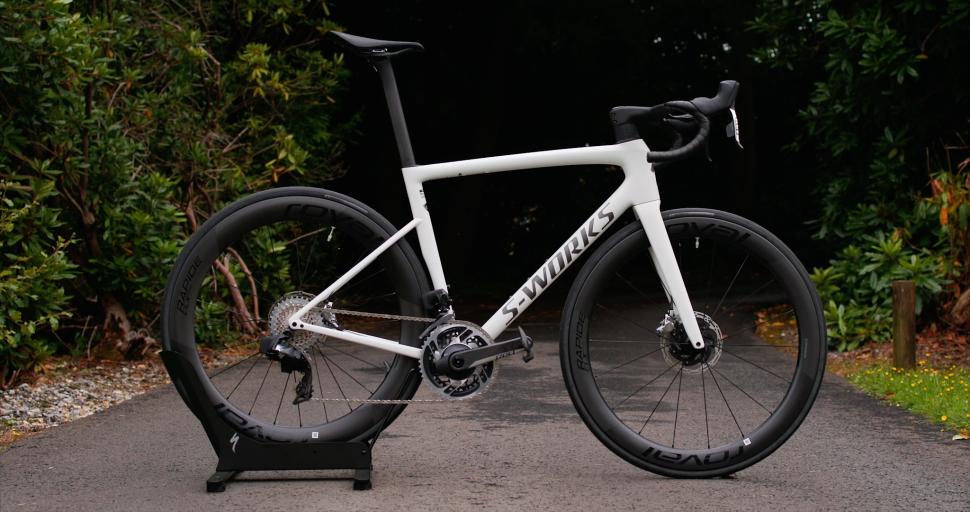
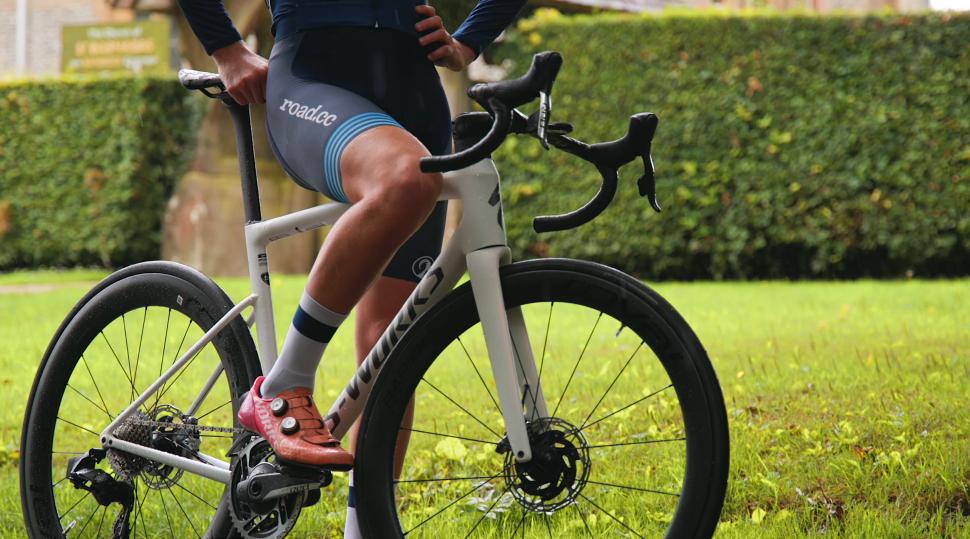
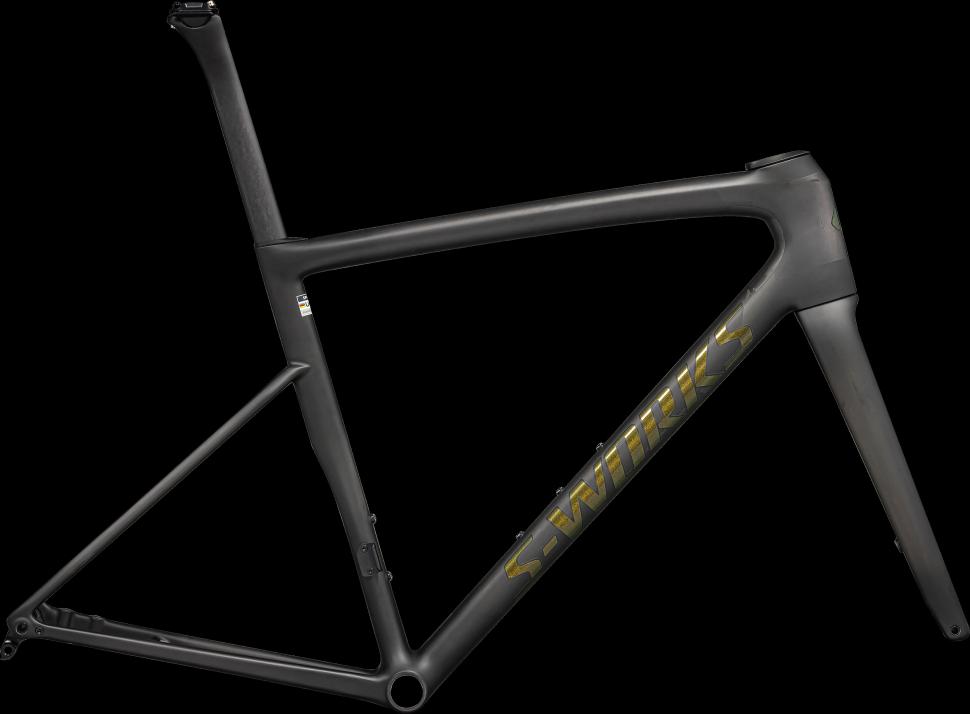
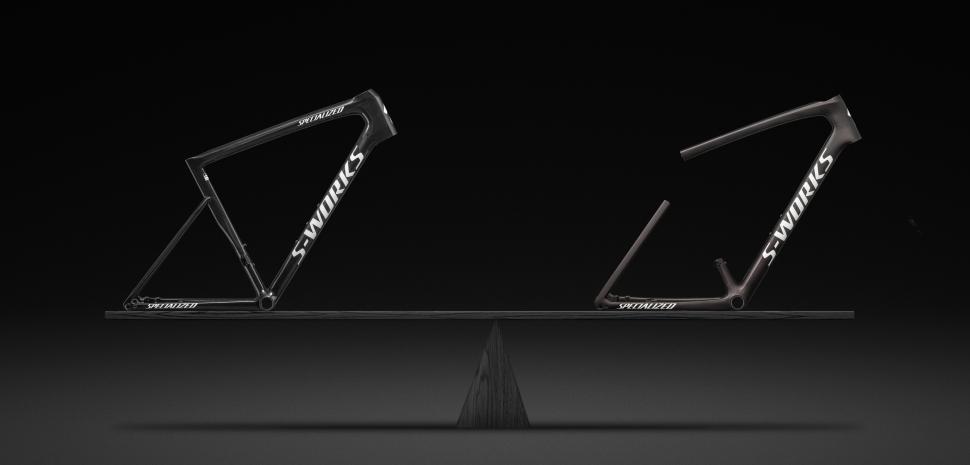
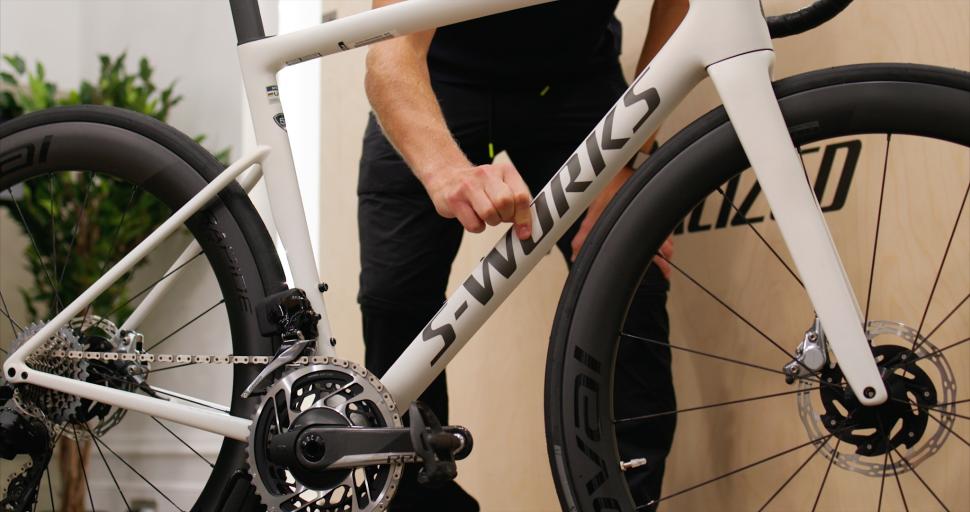
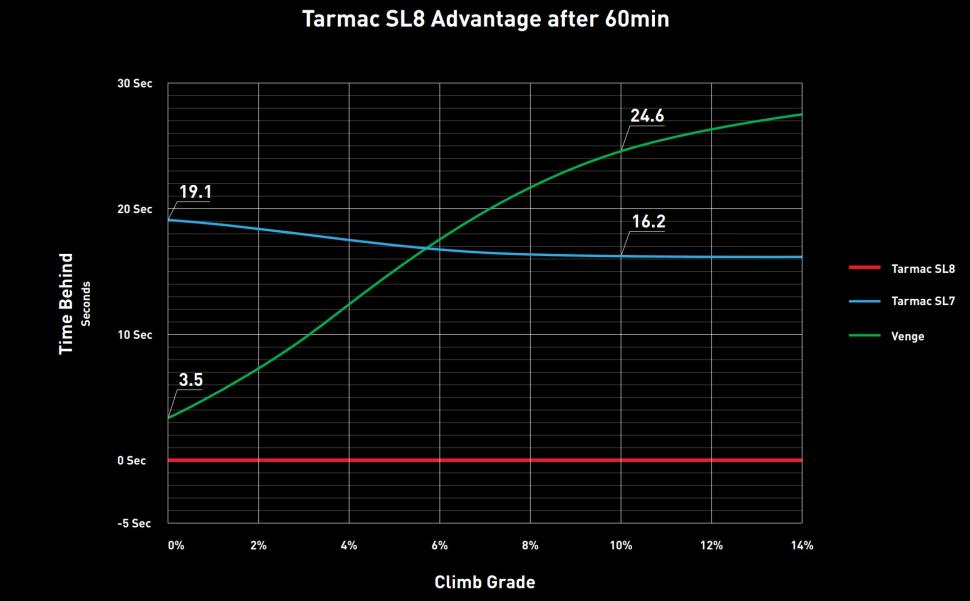
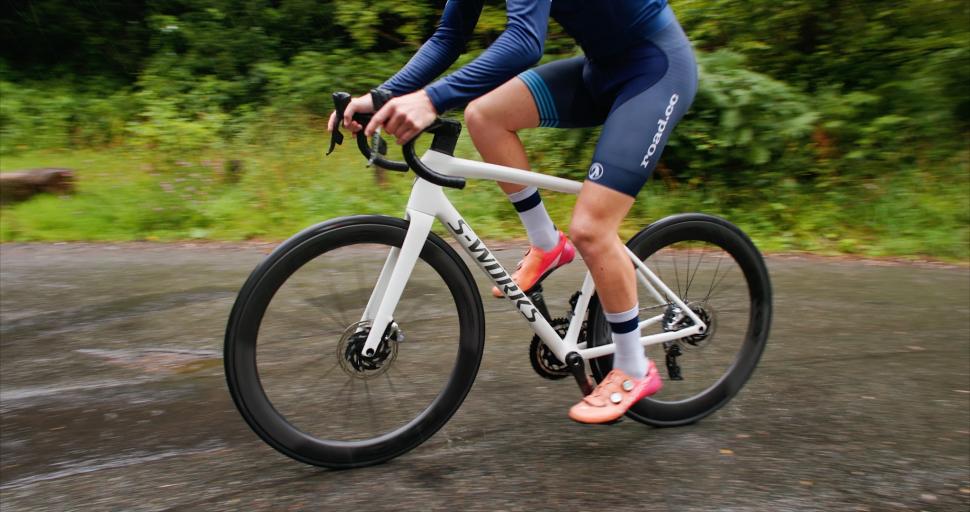
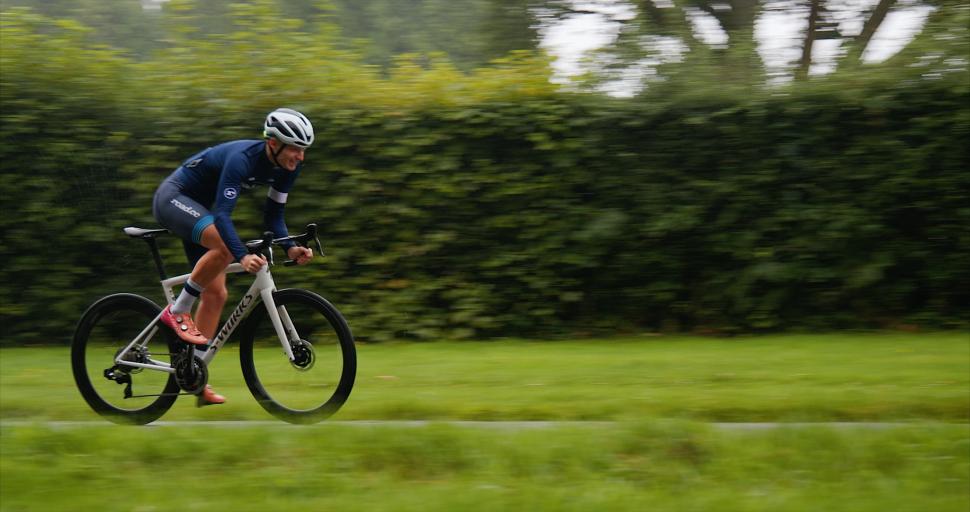
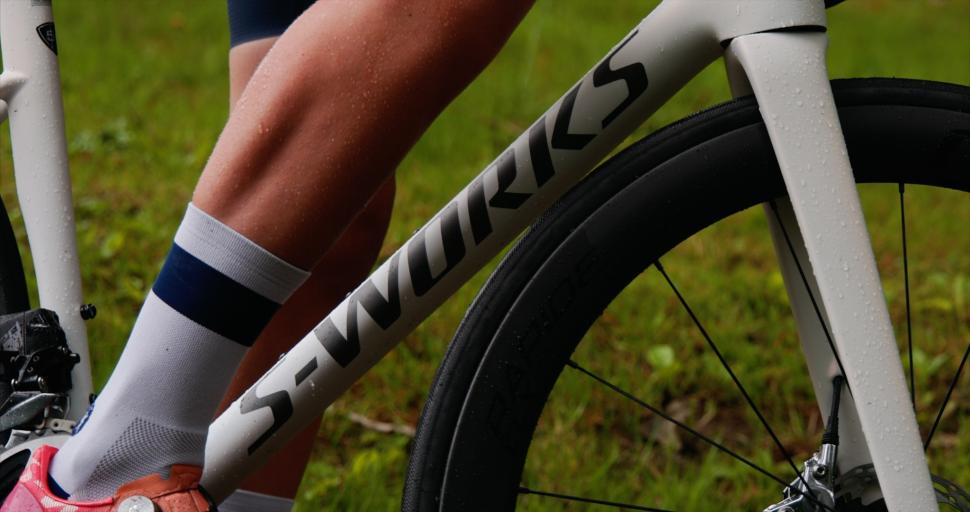
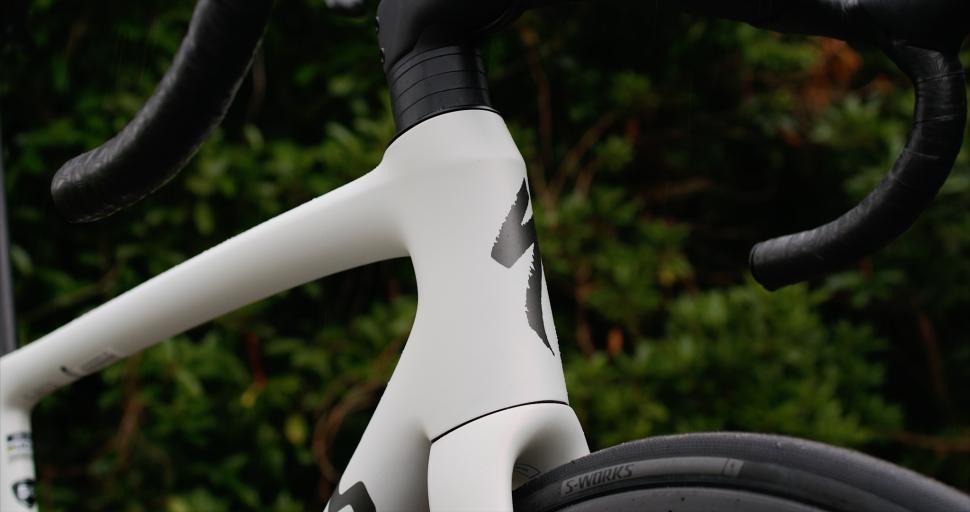


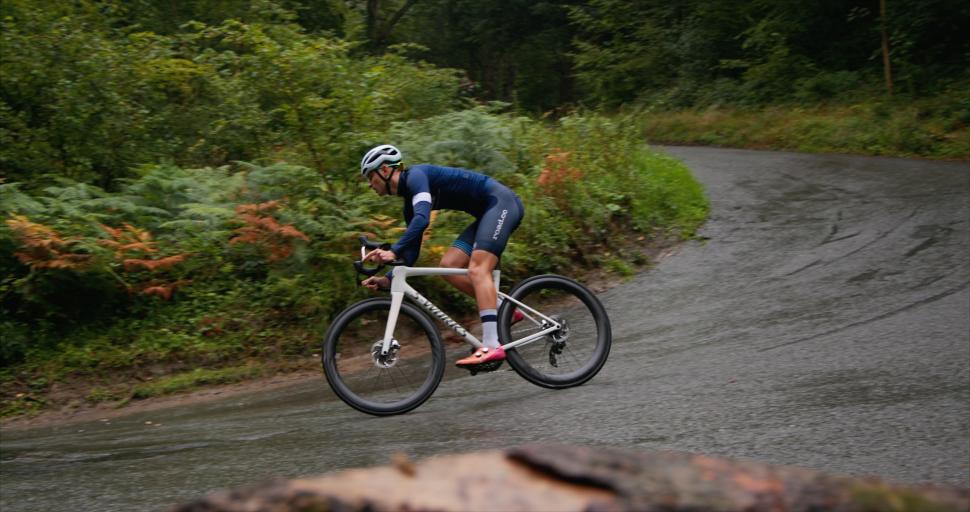

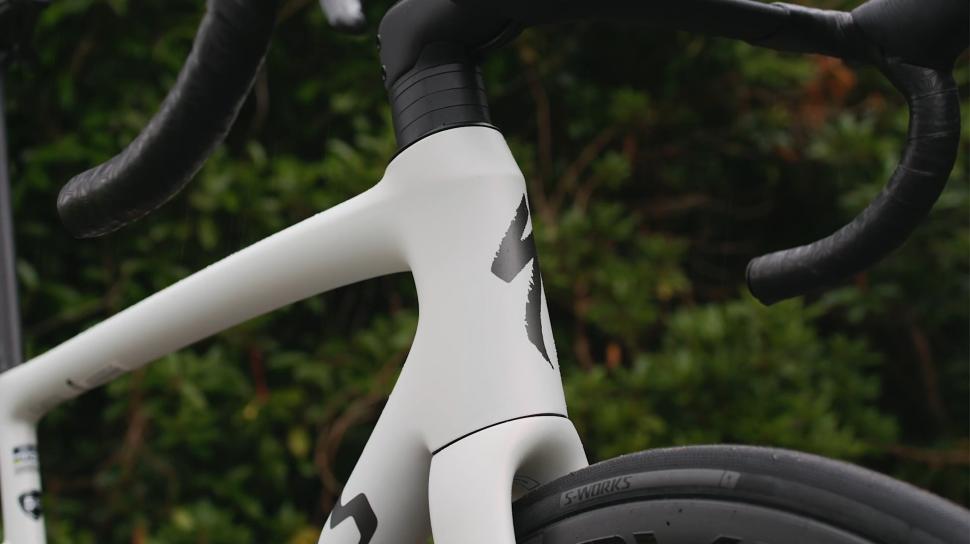
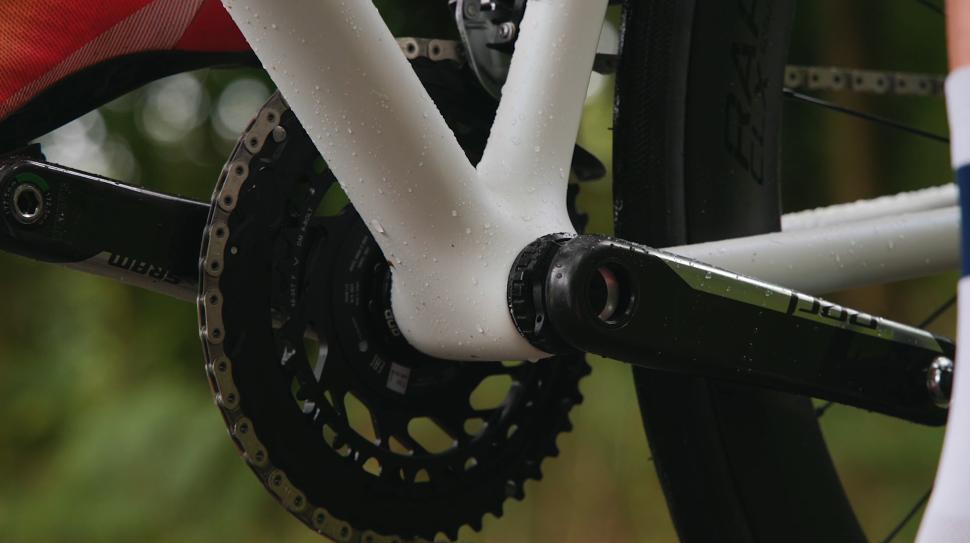


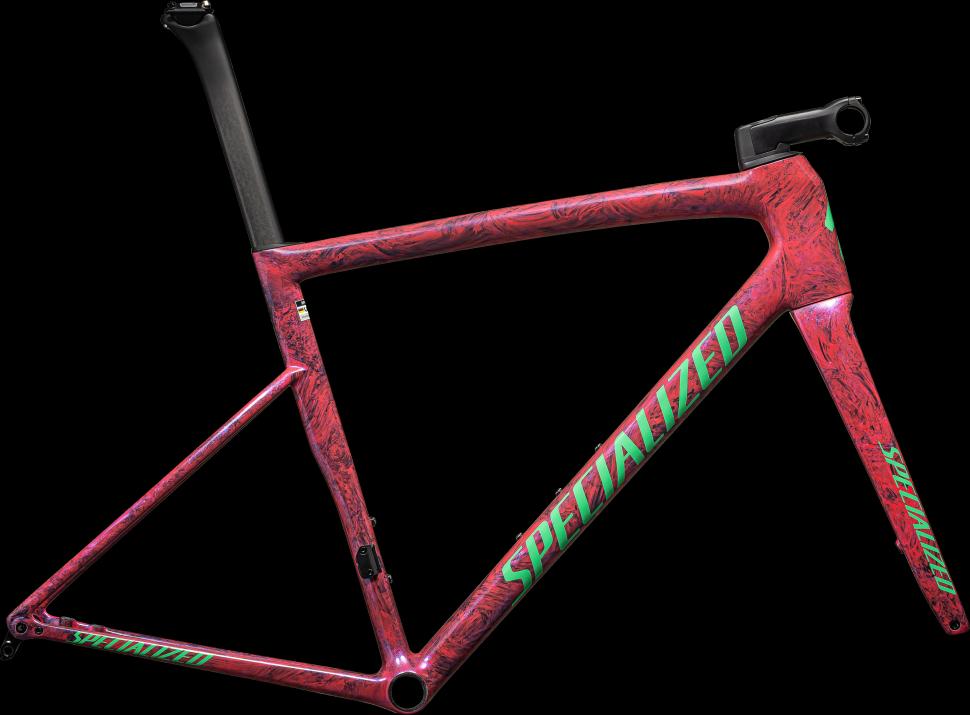


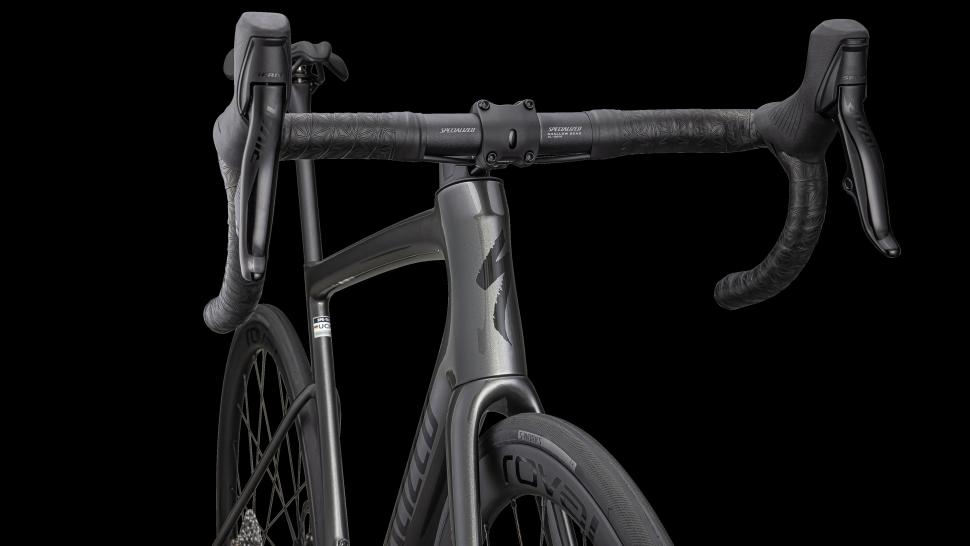
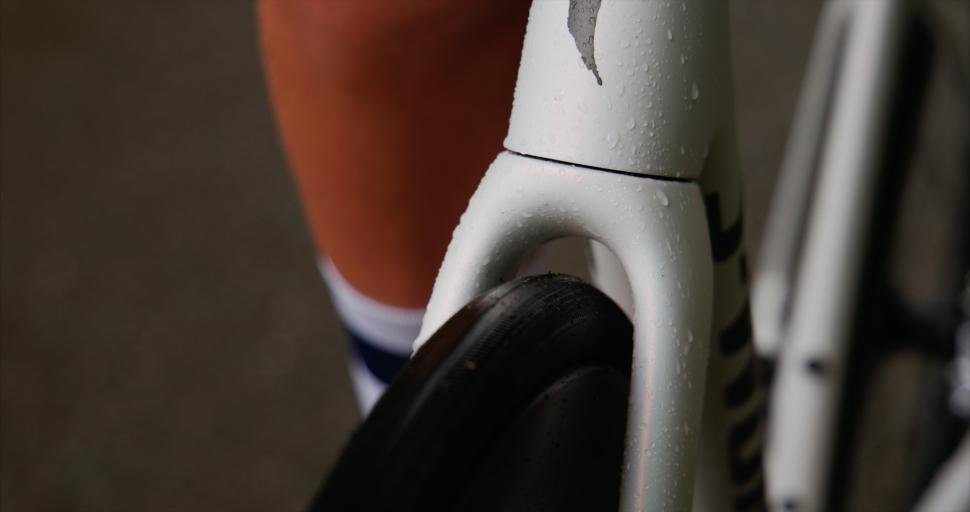

Add new comment
17 comments
Put the latest Roval Rapide CLX II wheels on the 2019 Venge and then fit the new Rapide integrated handlebar and I’d bet good money it would still be the fastest bike.
Now let me think:
Thirteen grand for a new bicycle or thirteen grand for a new Ducati Supersport 950?
Which offers value for money and which is taking the mickey?
Well, that picture makes it look like the rider is falling off, so I'll go for the bicycle thanks very much.
So the new headtube is being heralded as some kind of aero advancement, which is fine of course, but haven't Pinarello been doing the angled headtube thing since 2015?!
Good to see the price drop on the full builds but the frameset only price is still ridiculous. As pointed out before; you can self build for a lot less!
16 seconds.... over 40km... at 45kph....
That's 0.5% 'faster'.
In TdF terms, that's loads. 0.5% over 2000km.... is literally miles of difference. But they aren't testing at the TdF. They're testing in their own windtunnel, where 0.5% is almost certainly well within the equipment's margin of error.
Guess what... the thing it's being compared to was supposedly 0.5% faster as well...
And they've been doing this with each successive product for years.
These aren't claims of ludicrous speed increases... they're just ludicrous claims. This bike could well be slower than the original SL and we'd never be able to tell and we'd certainly never win a court case, but Specialised is marketing this as the fastest bike it's ever made on the back of a decade or more of untestable/unprovable, margin of error speed increases.
And they aren't alone. And you should be calling out this kind of BS.
The "you" that you exhort to do some calling out of ludicrous marketing hype is the ludicrous marketing hype-provider. Why else would such an expensive and useless item (for everyday cycling by ordinary humans) be even mentioned here?
Why such a huge difference in frameset vs complete bike cost?
It seems you can build the bike using the frameset to the same spec as the Ultegra version, for around £1400 less than just buying it complete. This also allows you to self select desired crank arm length, ratios, handlebar width, etc.
Surely there should be a saving buying a complete bike, over buying all parts individually?!
I'm not sure where you get £1400 from... I got to frameset, groupset, power meter and wheels before hitting the finished build price, and that's before adding in saddle, bars, stem, tyres, etc.
I make it:
Total £7550
So about £500 down, but that's assuming you pay full retail. Personally although I'm a keen mechanic if I were spending that much on a bike I'd be willing to spend the extra to ensure it was assembled by experts with all the guarantees that entails.
Ah OK, although the non S-Works frameset is £3500 not £3000 but includes the stem - even so, next to nothing in it. I would also be inclined to buy assembled, any Specialized dealer selling this and doing a bike fit will happily swap out saddle, bars, stem, cranks if needed different from the standard spec.
Genuine question. Do the cycling press get paid to publicise Specialized products? Entirely understandable if they do I'm just interested, Whenever they release anything it's all over the press and unavoidable. Perhaps it's just because they are a big company and adept at marketing.
I think that this is big news, like a new Madone, etc. And yes, I imagine Spesh's PR people are really, really good...
Specialized have a new product, their well-resourced marketing team invites a load of journos to come and try it ahead of release. They say you can't publish anything about it until [date]. Date comes, journos publish en masse, hype generated*. Of course, nobody is forcing them to test ir, or to write about it, but it's one of the biggest brands, and their readers are probably going to want to read about it - it's easily explained without assuming it's paid for advertising.
* plus of course pre-hype from 'leaks'
You mean the pre-launch 'leak' story Road CC took down, probably because Spesh said do that again and you won't be getting an embargoed review bike?
Why no proper mention of the comfort given that one of the criticisms of the 7 is that it's a much harder ride than the 6?
Yes, that one (and I speculated exactly the same thing on that day's blog).
Ok, there's a fine line to tread if you want to be invited to future manufacturer events, but a manufacturer like Spesh is presumably sophisticated enough to allow reviewers to write what they actually think, even if it's not glowing.
As for comfort, this is only "first impressions", but they do cover it:
i don't care for carbon and/or modern bikes, but I love the funky paint jobs on the white and red frames. There's more then enough dull grey/black/muted road bikes around.
Yes, i'm the same, not keen on these 'modern' plastic bikes or the fart sniffer.
Each to their own of course, but they just don't do it for me, but I do like the vibrant colours, better than the usual funeral directors livery I see so much.